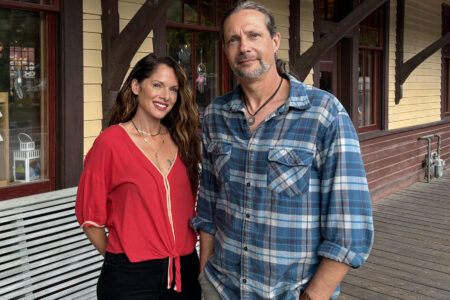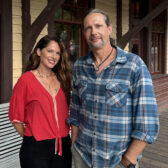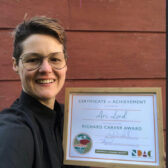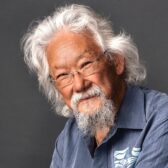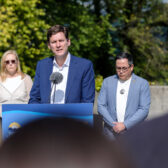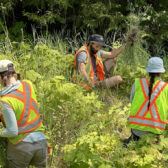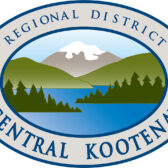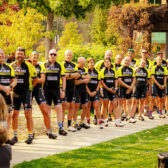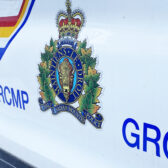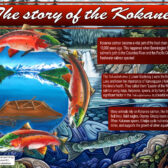Up and running: study to investigate separate bike/pedestrian link across bridge
The feasibility of constructing a separate bike line on the big orange bridge is being investigated through a new Provincial grant.
Billed as a Highway 3A Kootenay Lake Bridge active transportation improvement, the project entails engineering to determine the feasibility of constructing protected bicycle lanes and sidewalks on the bridge.
Funded through the Active Transportation Infrastructure Grant program, if it is realized it will improve “safety, comfort and accessibility of active transportation users crossing the bridge.”
Active transportation encompasses all forms of human-powered transportation modes such as walking and cycling, with variants like small-wheeled transport and wheelchair travel. The trip purposes for active transportation can vary from recreational pursuits to shopping and commuter trips.
The bridge connection would provide connectivity to the active transportation network being created throughout the region, including Nelson’s Cycling and Trail Network, the Trans-Canada Trail, and other recreational and commuter destinations on the north and south shore of Kootenay Lake.
In theory, the idea behind active transportation is more people would be able to leave their cars behind and choose active ways to get around efficiently and affordably across communities in the region and in Nelson.
The new active transportation lane across the bridge would dovetail into the work being done throughout and outside of the city to encourage non-vehicular transportation.
Two years ago, the Regional District of Central Kootenay undertook a feasibility study — on behalf of the West Kootenay Cycling Coalition (WKCC) — for an active transportation route between Nelson and Castlegar, through five electoral areas and connected parks, college campuses, schools, places of employment, goods and services and various neighbourhoods.
The route was expected to be a year-round, inclusive, accessible-protected pathway for safe commuting and recreation, and part of a larger vision that encompassed a multi-modal, active transport network connecting all of the West Kootenay.
The feasibility study concluded in May with a public survey, with the final recommendations expected to be delivered later this summer.
“Our end goal for this study is to create a plan with a viable route, including recommendations for any additional amenities or infrastructure needed to realize our vision,” noted a WKCC release earlier this year on the study. “Various options and preferences have been determined through stakeholder meetings, physical surveys, a review of traffic statistics, project research and comparison studies to other similar projects already successfully completed.”
Existing situation
Currently there are no convenient, safe active transport connections between communities, parks or trails in the region, noted a regional district report from planner Stephanie Johnson in 2022.
“The highway, hydro and CPR rail rights of way are parallel and provide opportunity for active transportation routes that could be at rail grades and situated on a combination of these lands,” she wrote.
In addition, there are a number of rail trails throughout the area that are not connected to each other — the Great Northern Rail Trail/Cottonwood Lake, Slocan Valley Rail Trail, protected pathway in Castlegar, rail trails to the Boundary area and beyond — and the existing parks and trails are not easily accessible to all ages and abilities.
Other barriers to active transportation include closed rail crossings that reroute users long distances, highway bridges that do not have any accommodation for pedestrians and no washroom facilities.
There are few places to park and lock bicycles, and not all buses have bike racks, said Johnson.
“An active transportation corridor provides commuters with a viable and safe, healthy, environmentally-conscious alternative to car driving,” she said.
Source: The Nelson Daily, 2022
Closer to home
In 2019 the WKCC advocated for more infrastructure in Nelson to help foster a deeper cycling culture throughout the city.
Although transportation plans for the city have focused primarily on roadway networks and infrastructure related to the automobile, almost one third of the city’s commuters use alternative modes of transportation to commute to work.
Thirty-one per cent of Nelson residents walked or cycled to work, according to the 2006 Census, compared to only a nine per cent average for British Columbia.
The City’s Active Transportation Plan identified multi-use trails, pedestrian and cycling amenities and public transit improvements to increase options for human-powered forms of transportation within the city.
The intent of the plan was to encourage alternative modes of transportation in an effort to reduce greenhouse gas emissions and increase accessibility for all citizens.



